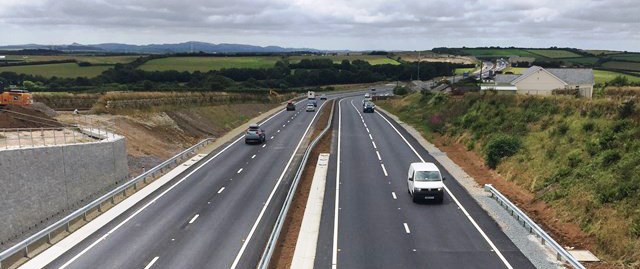Readers of the new Resilience Success Guide know that reconnecting places of often key to revitalizing them. And ecologists are well aware that roadways disconnect wildlife communities at the same time they connect human communities.
So, it’s heartening to see the that government of the United Kingdom (UK) is working to rectify that problem. Highways England recently planted 10,000 native trees along highway in the South West of England to boost roadside wildlife habitat. The tree and shrub planting is along the A30 and A38 highways, and its goal is to reconnect and thus help revitalize a 105 mile corridor of wildlife habitat.
The work is taking place at 21 sites in Devon and Cornwall and involves the planting of 10,000 native trees and shrubs to fill or reduce gaps in hedgerow and woodland along the roadside. In total, the planting will provide around three extra miles of vegetation and connect over 105 miles of habitat on the verge and land adjacent to the A30 and A38.
The program was delivered under Highways England’s national Biodiversity Plan which is being supported by a £30 million national investment program over the next five years. The plan recognizes road verges and associated land can be managed to provide areas of habitat, relatively free from human access, that may be scarce in the surrounding landscape.
These road verges can also be used to connect fragmented habitats in the wider landscape, enabling plant and animal populations to move and interact, and so become stronger and more resilient.
Ecologist Leonardo Gubert says of the program, “Highways England is committed to protecting the environment through its biodiversity plan and improving the connectivity of habitats along our roads is one of our top nature conservation priorities. The main aim of this improvement scheme is to reconnect wildlife habitat and ecosystems on a significant scale across our road network in the South West allowing species to move between core areas. The work is expected to have a huge benefit for a wide variety of species of animals including insects, birds, and mammals, such as butterflies, bees, flies and dormice, suitable places to forage, shelter and breed.”
Tree and shrub species being planted include oak, maple, holly, willow, honeysuckle and rose at locations between Pocombe Bridge and Pulsack on the A30 and Wrangaton and Bellamarsh on the A38. The planting program ran from February 5 through March 16, 2018.
Highways England has also been undertaking a lowland heathland conservation scheme in Devon and Cornwall and has plans to expand its species rich wildflower meadows in the South West as part of a future improvement program. The lowland heathland is a priority for nature conservation because it is a rare and threatened habitat which supports a variety of scare birds, animals and plants.
There are several areas on the Highways England network in Devon and Cornwall where road verges are either suitable for heathland species or are located adjacent to sites where heathland is present or has been historically recorded.
Work has included the planting and management of new heathland areas and aftercare at eight locations covering over 26,000 square metres across the Highways England network. Location sites are along the A30 and A38 including Dartmoor, Bodmin Moor and Goss Moor, and Haldon Hill.
Photo of the A30 highway as it runs through Cornwall courtesy of the Government of Cornwall.

